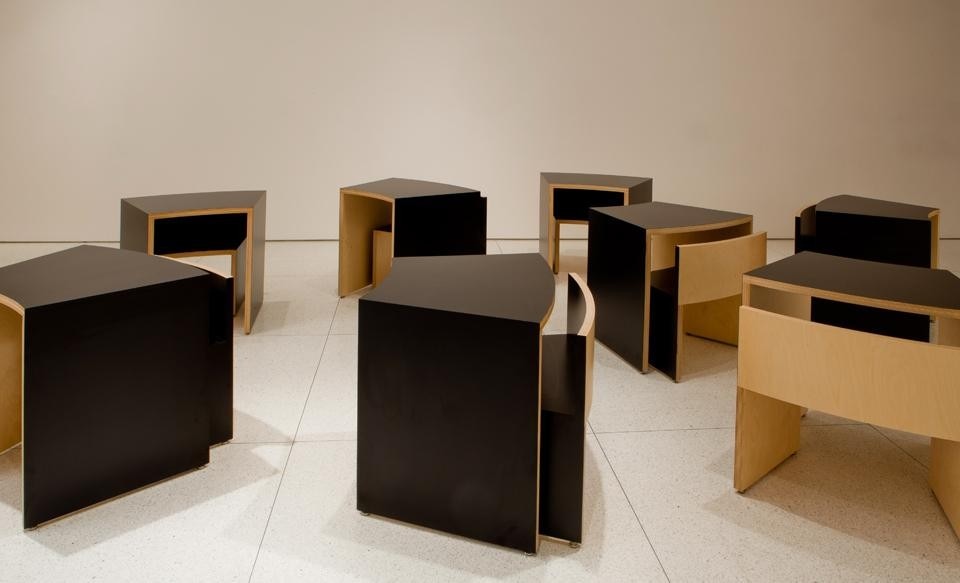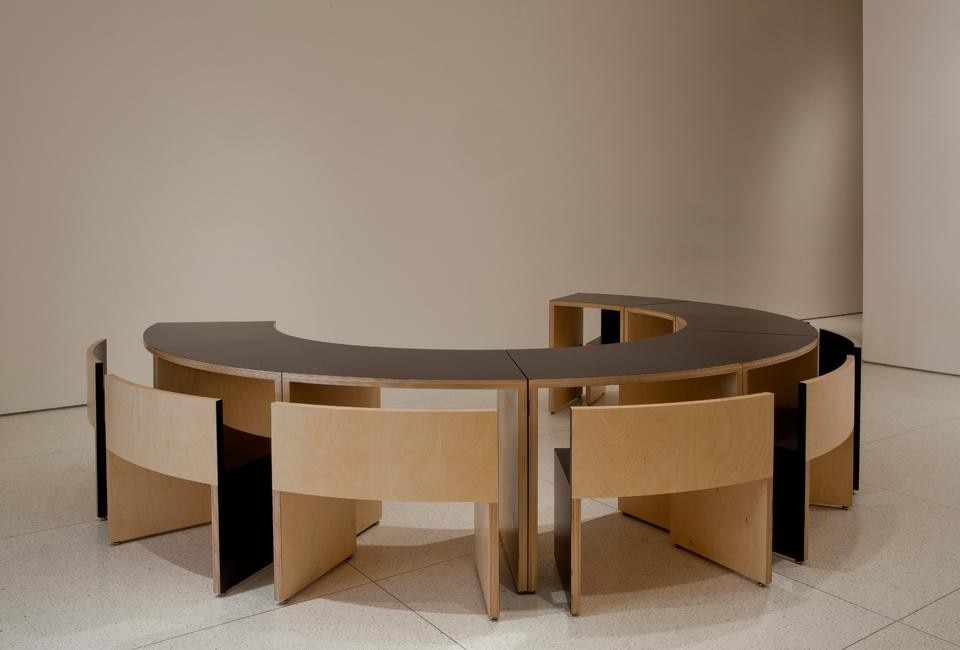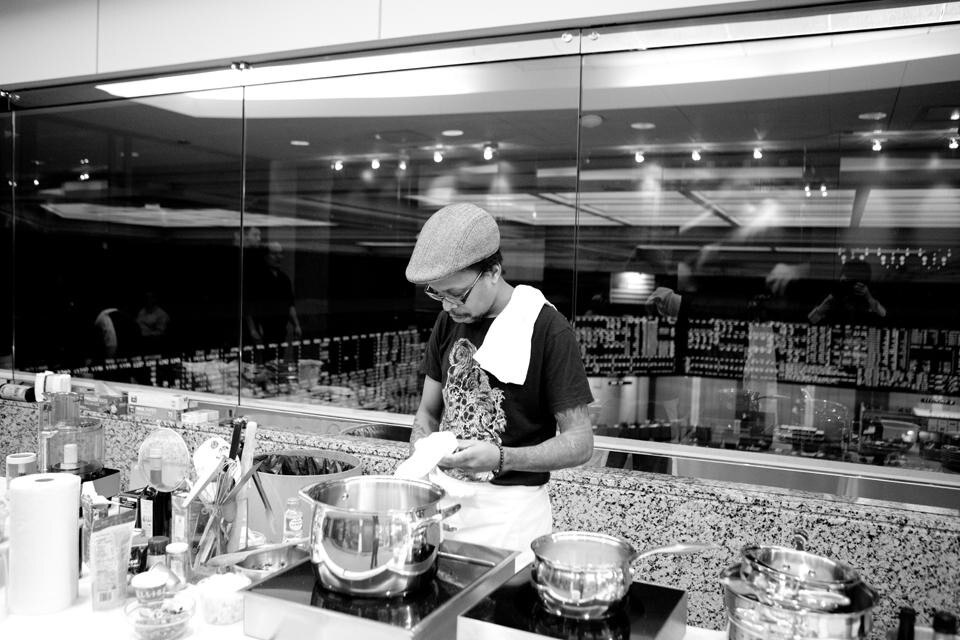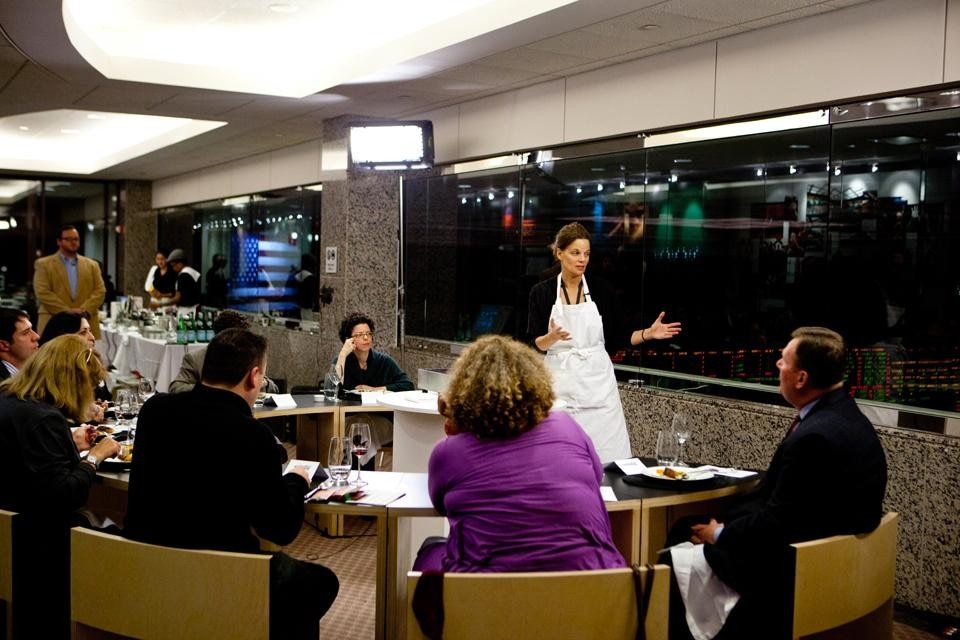Architect Simon Dance designed a modular table and chair system in collaboration with the conceptual artist Mary Ellen Carroll. The idea was to hold a lunch to discuss various topical issues. This is the latest in a long running project in which she creates site-specific installations involving meals around the concept of Itinerant Gastronomy, first staged in New York City. Last year her work prototype 180 was staged in a suburb of Houston, involving the lifting and pivoting by 180 degrees of a 1960s ranch-style family residence, questioning normative ways in which housing is built.
Carroll, who decided collaborate with the chef Ron Jean Gilles for the occasion, chose the theme of food stuffs production for the conversation, which was filmed, and invited figures from across sectors, serving them a menu reflecting that. An artist, a museum director, a pig farmer, an economist, a comedian, the Mayor of Chicago, the head of CME Group, and Michelle Obama were all invited. "Hospitality is about pleasure, the unexpected and moments of grace", she says. The venue she chose was the CME Group Visitor Gallery in the historic Chicago Board of Trade Building, an archetypal place of a trading market photographed by Andreas Gursky and others, and since the 11 September 2001 attacks, out of bounds to the public.
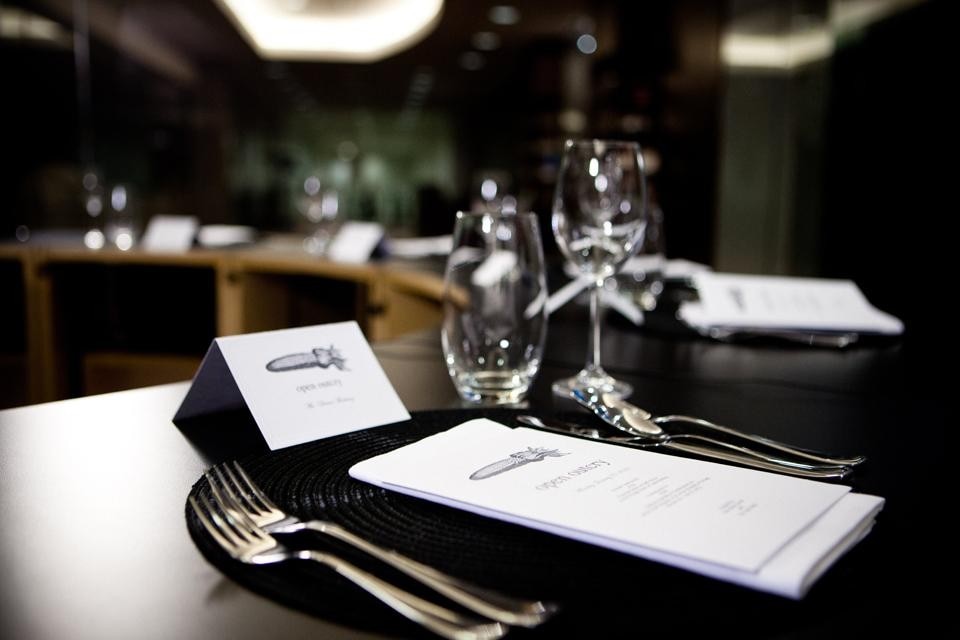
The commission was called Open Outcry, which refers to the method of communication between stock traders in the pit of the trading floor of a stock exchange, which is lowered for that reason, and looks like a miniature amphitheatre. A system that may in the future become obsolete as digital processes take over, it involves shouting and the use of hand signals by the traders, who wear different coloured jackets to indicate their function, it is a long standing, reliable method of transferring information about buy and sell orders, even though it looks chaotic and confusing to onlookers.
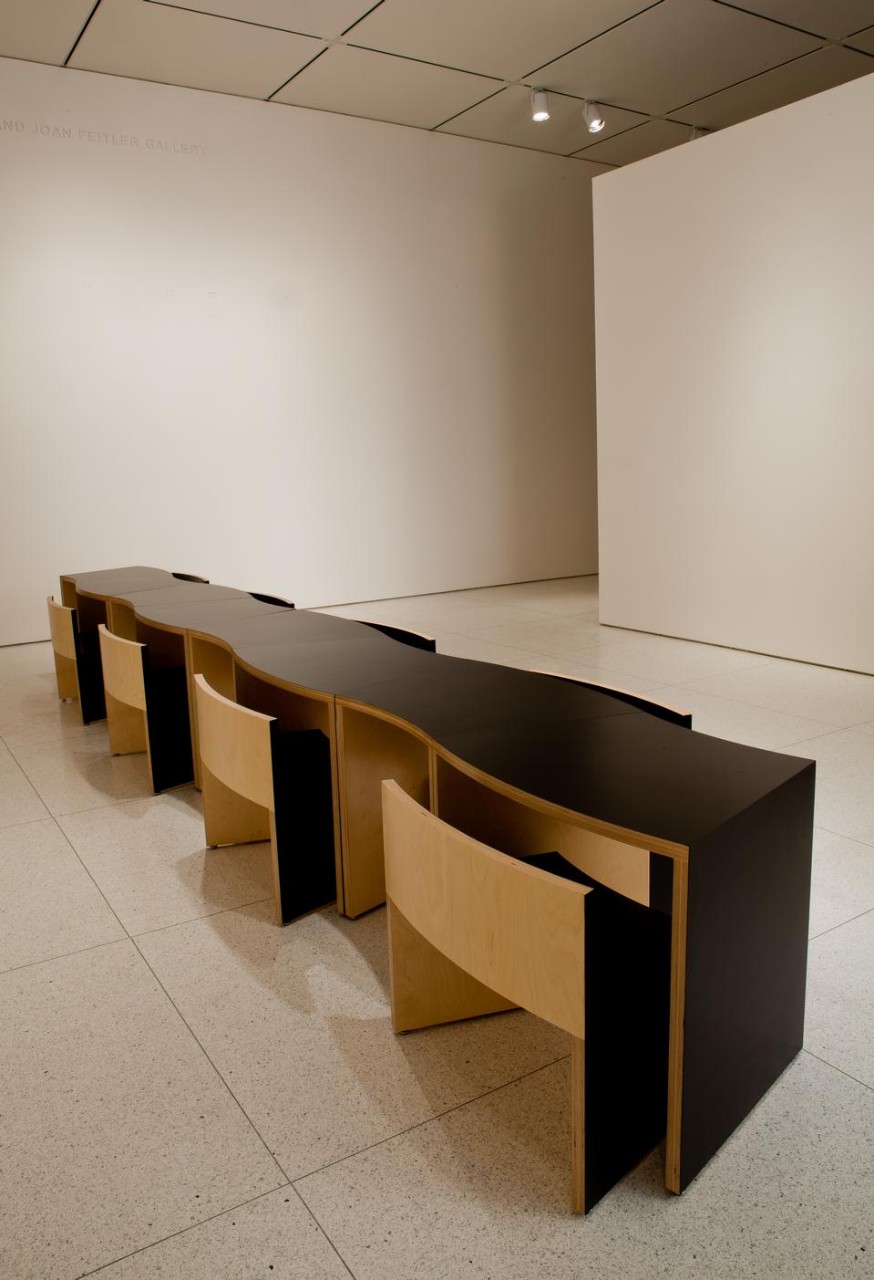
Simon Dance of Simon Dance Design was invited to be involved in the collaboration last September. His initial ideas for the table and chair's geometry and configuration were inspired in part by Ken Adam's table for the Stanley Kubrick film Dr Strangelove, the bar scene in his film The Shining and the set design of 2001 a Space Odyssey, as well as the Greek theatre Epidaurus at Argolis, and a table designed for diplomatic negotiations. Design sketches and study model options were evolved through a number of stages and inspirations, including Shaker furniture, Sol Le Witt, AG Fronzoni, Donald Judd, Gerrit Rietveld, Charles Rennie Mackintosh — getting all the archetypes "out of the way". "Good design is about understanding what went before and learning from it", he says.
The commission was called Open Outcry, which refers to the method of communication between stock traders in the pit of the trading floor of a stock exchange, which is lowered for that reason, and looks like a miniature amphitheatre
